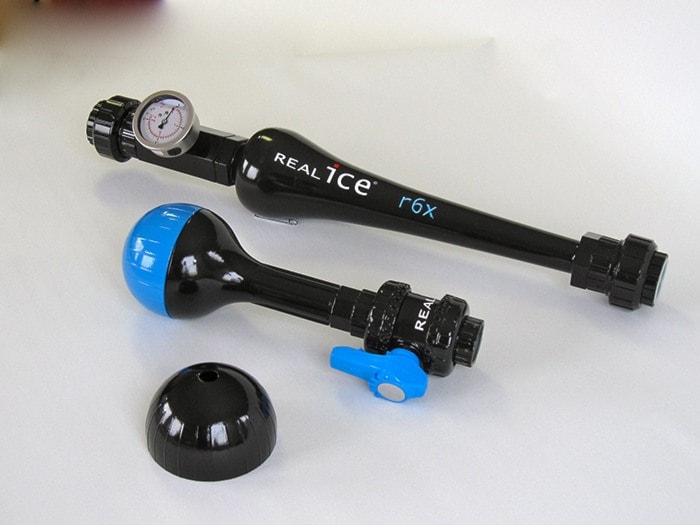State-of-the-art technology, which is being used all over Europe, has come to Nelson’s Civic arena.
Thanks to a pilot project by FortisBC, the new REALice technology is being tested in 10 BC communities.
Over the next three months, the new system will be used to clean ice surfaces, in the hope that it will cut down emissions, decrease costs and possibly create a better ice surface.
“Currently what they’re using is warm water to fill their Zamboni that is used for resurfacing the ice,” explained Jim Kobialko, FortisBC’s innovative technology program manager.
A Zamboni, a large drivable vehicle, helps smooth out the ice surface after heavy use, whether that be from playing hockey, figure skating, recreational skating or other uses.
“So after people skate on it, it gets pretty rugged and they have to resurface it to make it a smooth hard surface.”
Kobialko said hot water has always been used to eliminate “micro bubbles” in the ice.
“Typically, when you use cold water, air gets stuck in the ice and it creates a rough surface to skate on.”
But REALice technology allows arenas to use cold water on their ice surfaces.
“The water goes through a compact piping system that has no moving parts which basically rotates the water, city water, that flows through it.
“So it creates a vortex, a spinning motion.”
Through the motion of spinning, the technology separates the air bubbles from the water.
“So when it goes into the Zamboni and they use it to resurface the ice, it creates the smooth, hard surface using cold water. Thus you get gas savings,” said Kobialko.
But savings may not be the only bonus. The manufacturer of the new technology is claiming that its product makes the ice surface even better than before.
That’s a statement Kobialko could neither confirm or deny.
He explained that as part of the pilot project, FortisBC acts as objective observers. He won’t say if it improves the quality of ice, but they plan to consult with user groups and arena operators, and examine the data collected to see if it does.
What he did say is some major players seem to feel the technology does have merit.
“The technology has been used and adopted for the 2014 World Hockey Championships,” he said.
“Also, it has been adopted all across Europe and has been endorsed by the International Ice Hockey Federation. So it is definitely a common technology in other places in the world, but not widely adopted in BC.”
Kobialko said FortisBC became involved because of the known benefits.
“Basically there are two benefits. One would be the gas and the electric savings associated to using this technology. The other would be that the ice quality would stay the same, or improve.”
Part of FortisBC’s mandate is to promote the adoption of innovative technology by conduction pilot and demonstration projects to see if they present actual savings.
Nelson is part of that project.
“We have monitoring equipment set up.”
He said the results could go either way. The ice quality may be considered poor.
“We don’t know. That’s why we’re conduction this pilot.”
Ten different location is BC, from the Lower Mainland to Prince George are involved.
After the pilot project is complete, FortisBC will decide whether to transition it into future programs and possibly offer incentive or rebates to install it.
He said results should be available within the next three months to determine the cost savings and ice quality.
Al May, the ice operator at the Civic arena, has hands-on experience using the new technology.
“There are a few adjustments I’m making, but I’m getting happier with it,” said May.
He said the surface is fine to play on and he’s received no complaints about the ice quality.
“I think it’s a little snowier, but I don’t know. I scraped her down to the paint pretty much so it’s nice and bright. It might just look a little snowier with all the reflection.”
Early indications seem to point to some ice condition improvements. Nelson Figure Skating Club coach Sarah Gower had no idea that a new technology was being used. However she did notice changes to the ice.
“It was definitely nicer than it was before Christmas. I thought it was smoother,” said Gower.
“It felt smoother and it looked a little bit different. I thought ‘Did they repaint the lines or do something like that over the holidays?’”
Gower said she has only skated on the new surface a few times and will be paying more attention to it from now on.
For more on the technology, visit the manufacturers website at realice.ca.
